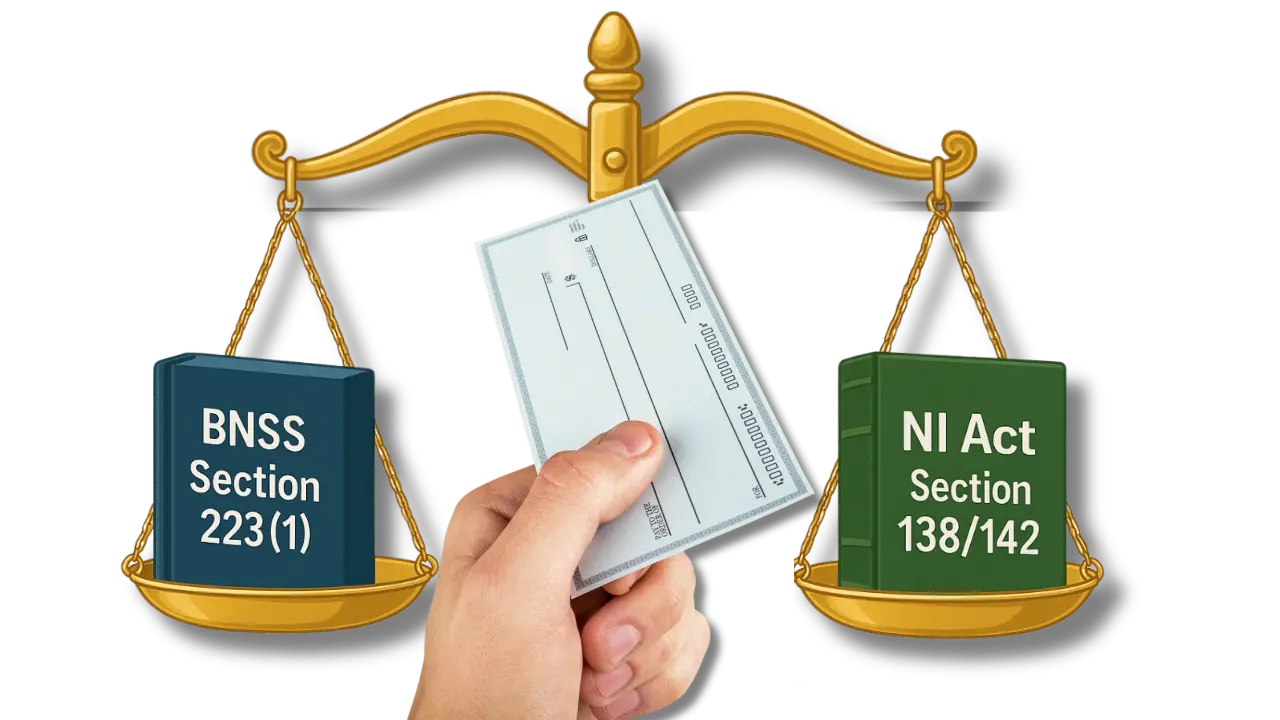Introduction
Arbitration, a private and efficient alternative to traditional litigation, stands on the foundational pillars of contract creation, party autonomy, and consensus ad idem. Yet, the very essence of its utility—its scope—has historically been shrouded in ambiguity. The question of “arbitrability”—whether a specific dispute can be resolved through arbitration—has been a persistent challenge, with limited statutory guidance in both international and Indian legal frameworks. This silence has thrust judicial interpretation into the limelight, shaping the contours of this crucial aspect of dispute resolution. This article embarks on a journey through the evolution of arbitrability in India, tracing the path from the foundational Booz Allen test to the expansive fourfold framework established in Vidya Drolia, ultimately aiming to illuminate the ongoing quest for clarity in this vital legal domain.
The Genesis: Unpacking the Booz Allen Test
The landmark Supreme Court decision in Booz Allen & Hamilton Inc. v. SBI Home Finance Ltd. & Ors.1 marked a pivotal moment in defining arbitrability in India. Faced with the question of whether a suit for enforcement of a charge/mortgage could be settled through arbitration, the Apex Court, while answering in the negative, laid down three essential conditions for a dispute to be amenable to arbitration:
- Capability of Adjudication: The dispute must inherently be capable of being settled through arbitration.
- Coverage by Agreement: The dispute must fall within the ambit of the arbitration agreement.
- Party Referral: The parties must have, in fact, referred the dispute to arbitration.
Crucially, the Booz Allen judgment also enumerated six categories of disputes deemed non-arbitrable, owing to their inherent nature and broader public implications:
- Disputes arising from criminal offenses.
- Matrimonial disputes (divorce, judicial separation, restitution of conjugal rights, child custody).
- Guardianship matters.
- Insolvency and winding-up proceedings.
- Testamentary matters.
- Eviction or tenancy matters governed by special statutes offering statutory protection to tenants.
The bedrock of the Booz Allen test lay in the distinction between rights in personam (rights against specific individuals, typically found in contracts and amenable to arbitration) and rights in rem (rights exercisable against the world, generally requiring judicial intervention). However, the Court acknowledged that subordinate rights in personam stemming from rights in rem could still be referred to arbitration. For nearly a decade, this framework served as the guiding beacon for arbitrability in India, setting the stage for subsequent judicial refinements.
The Ripples of Booz Allen: Subsequent Interpretations and Divergences
The Booz Allen test, while foundational, was not without its complexities. Indian courts soon encountered nuanced scenarios, particularly concerning disputes involving fraud, taxation, and insolvency, which necessitated further deliberation. These subsequent pronouncements, though building upon Booz Allen, also exposed areas where its application led to varied interpretations.
In Shri Vimal Kishor Shah v. Jayesh Dinesh Shah & Others2, the Supreme Court carved out a seventh exception to arbitrability, holding that disputes arising from trust deeds, governed by the comprehensive machinery of the IT Act3, fall under the exclusive jurisdiction of civil courts. This affirmed that where a special statute provides for a specific remedy and forum, it implicitly bars arbitration.
Another significant development came in Ayyasamy v. A. Paramasivam and Others4. The Supreme Court underscored that conferring exclusive jurisdiction to a specified court or tribunal, driven by public policy considerations, inherently precludes arbitration. On the vexed issue of fraud, the Court distinguished between allegations of fraud that do not impact the public domain (which could be arbitrable) and serious instances demanding extensive evidence and judicial scrutiny (which remain non-arbitrable).
Despite these refinements, lower courts often grappled with the precise application of Booz Allen, leading to divergent outcomes. For instance:
- In Rakesh Kumar Malhotra v Rajinder Kumar Malhotra5, the Bombay High Court deemed disputes of oppression and mismanagement under the ICA6, non-arbitrable, reasoning that some relief sought might be in rem.
- Conversely, in Eros International Media Ltd. v. Telemax Links India (P) Ltd7. The Bombay High Court held that contractual rights related to copyrights were arbitrable, viewing the remedy as a right in personam, even though the underlying copyright itself is a right in rem.
- Similarly, Lifestyle Equities CV v. Q.D. Seatoman Designs Pvt. Ltd. and Ors8. affirmed the arbitrability of a permanent injunction decree related to copyright, as it sought a right in personam rather than a declaratory relief of ownership (in rem).
These cases highlighted a growing emphasis on the nature of the relief sought rather than solely the rights and interests of the parties in determining arbitrability. This approach, however, presented a potential loophole, allowing parties to sidestep the Booz Allen test by framing their prayers for relief in a specific manner. The Supreme Court itself acknowledged that the Booz Allen categories were not rigid rules to be blindly followed. The stage was set for a more comprehensive and definitive framework.
The New Horizon: The Vidya Drolia Fourfold Test
The year 2019 marked a paradigm shift in Indian arbitration jurisprudence with the Supreme Court’s seminal ruling in Vidya Drolia and Ors v. Durga Trading Corporation9. This decision, while analyzing the arbitrability of landlord-tenant disputes under the TPA10, significantly broadened the scope of arbitrability. The Court elucidated that the mere existence of a special statute governing a dispute does not, ipso facto, render it non-arbitrable, thereby unlocking arbitration as a viable option in more complex legal contexts.
The Vidya Drolia judgment, delivered by a three-judge bench, introduced an expansive fourfold test to ascertain the non-arbitrability of disputes:
- Rights in Rem (excluding subordinate rights in Personam): Disputes where the cause of action and subject matter relate to actions in rem that do not pertain to subordinate rights in personam arising from rights in rem.
- Third-Party Rights and Centralized Adjudication: Disputes affecting third-party rights, having an erga omnes (against everyone) effect, requiring centralized adjudication, and where mutual adjudication would be inappropriate and unenforceable.
- Sovereign and Public Interest Functions: Disputes concerning inalienable sovereign and public interest functions of the State, where mutual adjudication would be unenforceable.
- Express or Implied Statutory Bar: Disputes where the subject matter is expressly or by necessary implication non-arbitrable as per mandatory statute(s).
Applying this robust test, the Supreme Court clarified that land tenancy matters governed by the TPA, being subordinate rights in personam arising from rights in rem and lacking an erga omnes effect, are indeed amenable to arbitration. Conversely, matters like insolvency, patents and trademarks (which confer monopoly rights with an erga omnes effect), probate, and testamentary disputes were reaffirmed as non-arbitrable. Similarly, criminal offenses (offenses against the State) and matrimonial disputes, falling within the ambit of sovereign functions, were explicitly deemed non-arbitrable.
Latest Judicial Developments: Solidifying the Vidya Drolia Legacy
The Vidya Drolia framework has since become the bedrock for subsequent judicial pronouncements, leading to the express overruling of several earlier decisions and a more streamlined approach to arbitrability.
- Fraud: The Vidya Drolia decision expressly overruled N. Radhakrishnan v. Maestro Engineers11, which had held that serious allegations of fraud were beyond the purview of arbitration. Vidya Drolia clarified that allegations of fraud, when related to a civil dispute, can be subject to arbitration, with the caveat that fraud vitiating the arbitration clause itself remains a non-arbitrable aspect. This was recently reiterated in N.N. Global Mercantile Private Limited v. Indo Unique Flame Limited and Ors12., emphasizing that civil aspects of fraud, coercion, undue influence, or misrepresentation are within the arbitral tribunal’s adjudicatory power, unless expressly barred.
- Debt Recovery Tribunal Matters: The Apex Court in Vidya Drolia overruled HDFC Bank Ltd. v. Satpal Singh Bakshi13, which had held that matters within the Debt Recovery Tribunal’s jurisdiction were arbitrable. Vidya Drolia concluded that disputes under the Debt Recovery Tribunal, established by the BFI Act14, are non-arbitrable due to the special powers conferred upon the Tribunal.
- Tenancy Matters: Himangni Enterprises v. Kamaljeet Singh Ahluwalia15, which had declared tenancy matters under the TPA non-arbitrable, was also overruled by Vidya Drolia. It affirmed that tenancy disputes under the TPA are indeed arbitrable, with the crucial exception of those governed by rent control legislations that vest exclusive jurisdiction in specific forums to decide special rights and obligations. This was further reinforced in Suresh Shah v. Hipad Technology India Private Limited16.
The Gatekeeper’s Role: Who Decides Arbitrability?
As crucial as defining arbitrability is the question of “who decides arbitrability—the court or the arbitral tribunal?” This issue has also seen significant evolution in Indian jurisprudence.
The introduction of Section 11(6A) of the Arbitration Act, in 2015 sought to limit the court’s powers at the referral stage to a mere examination of the existence of an arbitration agreement, minimizing judicial intervention. Despite the subsequent omission of Subsection (6A) in the 2019 amendment (though not yet notified), Vidya Drolia affirmed that Section 11(6A) continues to guide a court’s jurisdiction at the referral stage. The court’s role is restricted to situations where the arbitration agreement is manifestly and ex facie non-existent or invalid, upholding the principle of competence-competence.
This sentiment was reinforced in DLF Home Developers Ltd. v. Rajapura Homes Pvt. Ltd17., where the Apex Court cautioned against mechanical application, urging courts to apply their minds within the Section 11(6A) framework without usurping the arbitral tribunal’s jurisdiction. The “eye-of-the-needle” test was articulated in NTPC Ltd. v. SPML Infra Ltd18., emphasizing the narrow scope of the court’s jurisdiction under Section 11(6A). The Court stated that, as a general rule, the Arbitral Tribunal is the preferred first authority to determine non-arbitrability, with referral courts intervening only in exceptional cases where claims are “manifestly and ex facie non-arbitrable.”
Most recently, in Indian Oil Corpn. Ltd. v. NCC Ltd19., the Supreme Court clarified that Section 11(6A) does not entirely prohibit the court from ascertaining arbitrability. While the arbitral tribunal has primary jurisdiction, the court can also consider non-arbitrability at the Section 11 stage if the facts are “very clear and glaring” and specific contractual clauses indicate non-arbitrability.
The Supreme Court’s latest pronouncement in In re Interplay between Arbitration Agreements under the Arbitration Act20, & the ISA21, decisively tackled the “who decides” conundrum. It unequivocally held that Section 11(6A) remains in force, and the court’s powers should be limited to a prima facie determination of the existence of an arbitration agreement based on Section 7 of the Arbitration Act. This determination is non-binding, allowing the arbitral tribunal to delve into the issue in depth. This interpretation squarely upholds the doctrine of competence-competence, leaving the substantive existence and validity of an arbitration agreement to the arbitral tribunal under Section 16 of the Arbitration Act.
Conclusion: The Evolving Tapestry of Arbitrability
In the grand tapestry of Indian dispute resolution, the Vidya Drolia case stands as a monumental knot, meticulously woven to bring clarity to the intricate concept of arbitrability. It has largely succeeded in laying to rest the enduring “conundrum,” forging a path that champions arbitration as a resilient, expeditious, and effective mechanism. The fourfold test, a testament to judicial foresight, ensures that arbitration remains guided by the fundamental principles of party autonomy, fairness, and enforceability. Unless a dispute inherently demands the intervention of a judicial court for its adjudication—due to its in rem nature, impact on third-party rights, public interest implications, or explicit statutory bar—it shall, by default, be amenable to resolution through arbitration, with the specific facts and circumstances of each case serving as the ultimate compass.
The Supreme Court’s most recent foray into the “who decides” question, particularly in In re Interplay between Arbitration Agreements under the Arbitration Act & the Indian Stamp Act, 1899, further solidifies this pro-arbitration stance. By restricting the courts’ power at the referral stage to a prima facie determination of the arbitration agreement’s existence and leaving the substantive validity to the arbitral tribunal, the Court has emphatically reinforced the doctrine of competence-competence. This vital principle, empowering arbitral tribunals to rule on their own jurisdiction, significantly reduces judicial intervention and streamlines the arbitral process, aligning India’s arbitration jurisprudence with international best practices.
In essence, while the Vidya Drolia judgment has undoubtedly brought much-needed certainty and a progressive outlook to arbitration in India, the legal journey is continuous. The evolving body of jurisprudence, meticulously shaped by judicial interpretation, will continue to sculpt the contours of arbitrability, ensuring that this vital mechanism remains both accessible and effective in the dynamic landscape of dispute resolution. The story of arbitrability, therefore, is not a concluded chapter, but a fascinating narrative that promises further refinements and deeper insights with each passing judgment.
Citations
- Booz Allen & Hamilton Inc. v. SBI Home Finance Ltd. & Ors. (2011) 5 SCC 532
- Shri Vimal Kishor Shah v. Jayesh Dinesh Shah & Others(2016) 8 SCC 788
- Indian Trusts Act, 1882
- Ayyasamy v. A. Paramasivam and Others(2016) 10 SCC 386
- Rakesh Kumar Malhotra v Rajinder Kumar Malhotra 2014 SCC OnLine Bom 1146
- Companies Act of India, 1956
- Eros International Media Ltd. v. Telemax Links India (P) Ltd. 2016 SCC Online Bom 2179
- Lifestyle Equities CV v. Q.D. Seatoman Designs Pvt. Ltd. and Ors.(2017) 8 MLJ 385
- Vidya Drolia and Ors v. Durga Trading Corporation (2021) 2 SCC 1
- Transfer of Property Act, 1882
- N. Radhakrishnan v. Maestro Engineers (2010) 1 SCC 72
- N.N. Global Mercantile Private Limited v. Indo Unique Flame Limited and Ors.(2021) 4 SCC 379
- HDFC Bank Ltd. v. Satpal Singh Bakshi 2012 SCC OnLine Del 4815
- Banks & Financial Institutions Act, 1993
- Himangni Enterprises v. Kamaljeet Singh Ahluwalia (2017) 10 SCC 706
- Suresh Shah v. Hipad Technology India Private Limited (2021) 1 SCC 529
- DLF Home Developers Ltd. v. Rajapura Homes Pvt. Ltd.(2021) 16 SCC 743
- NTPC Ltd. v. SPML Infra Ltd. (2023) 9 SCC 385
- Indian Oil Corpn. Ltd. v. NCC Ltd(2023) 2 SCC 539
- Arbitration & Conciliation Act, 1996
- Indian Stamp Act, 1899
Expositor(s): Adv. Anuja Pandit






